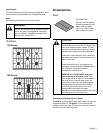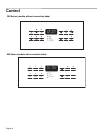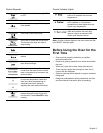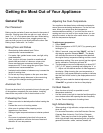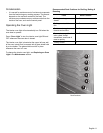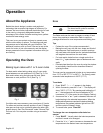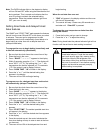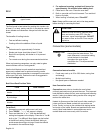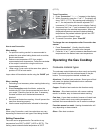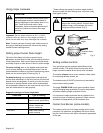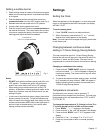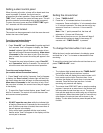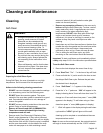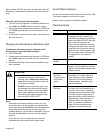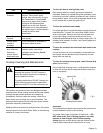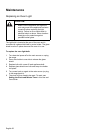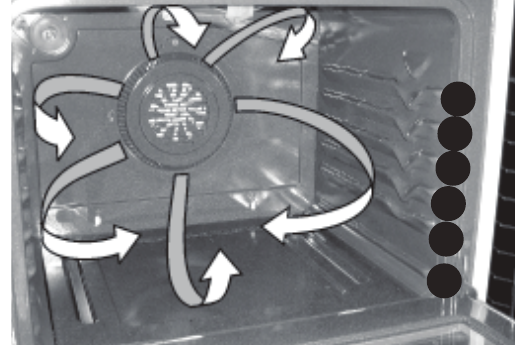
English 15
How to use Convection
When baking:
1. For optimum cooking results it is recommended to
preheat the oven when baking foods such as cookies,
biscuits and breads.
2. Reduce oven temperature 25°F from recipe’s
recommended oven temperature. Follow the remainder
of the recipe’s instructions using the minimum
recommended cooktime.
3. When using 2 oven racks at the same time, place in
positions 2 & 5 for best results.
Layer cakes will have better results using the “BAKE” pad.
When roasting
1. Preheating is not necessary when roasting foods using
Convection.
2. Since Convection cooks food faster, reduce the
cooktime by 25% from the recommended cook time of
your recipe. Check the food at this time. If necessary,
increase cooktime until the desired doneness is
obtained.
3. Do not cover foods when roasting - this will prevent the
meat from browning properly.
4. Use the same temperature as indicated in the recipe.
Note:
When using Convection, cook time reductions may vary
depending on the amount and type of food being cooked.
Setting Convection
The oven can be programmed to Convection at any
temperature from 300°F to 550°F (149°C to 287°C). The
factory preset automatic bake temperature is 350°F
(177°C).
To set Convection:
1. Press “Convection”. "— — —" appears in the display.
2. Within 5 seconds, press the “+” or “-”. The display will
show "350°F (177°C)." By pressing and holding the “+”
or “-”, the temperature can then be adjusted in 5°F
increments (1°C if the control is set to display Celsius).
3. As soon as the“+” or “-” pad is released, the oven will
begin heating to the selected temperature. When the
displayed temperature reaches the desired baking
temperature, the preheat indicator light will turn OFF
and the control will beep 3 times.
4. To cancel Convection, press “Clear/Off”.
To change the oven temperature after Convection has
started:
1. Press “Convection”. Visually check the bake
temperature and see if it needs to be changed.
2. Press the “+” or “-” pad to increase or decrease the set
temperature to the desired new oven temperature.
Operating the Gas Cooktop
Cookware material types
The cookware material determines how evenly and quickly
heat is transferred from the surface element to the pan
bottom. The most popular materials available are:
Aluminum - Excellent heat conductor. Some types of food
will cause it to darken (Anodized aluminum cookware
resists staining & pitting).
Copper - Excellent heat conductor but discolors easily.
Stainless - Slow heat conductor with uneven cooking
results. Is durable, easy to clean and resists staining.
Cast Iron - A poor heat conductor however will retain heat
very well. Cooks evenly once cooking temperature is
reached. Not recommended for use on ceramic cooktops.
Porcelain-enamel on metal - Heating characteristics will
vary depending on base material.
Glass - Slow heat conductor.
6
1
2
3
4
5



